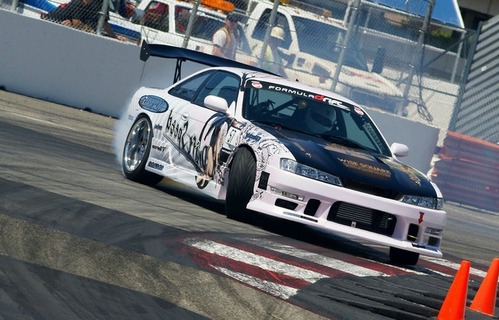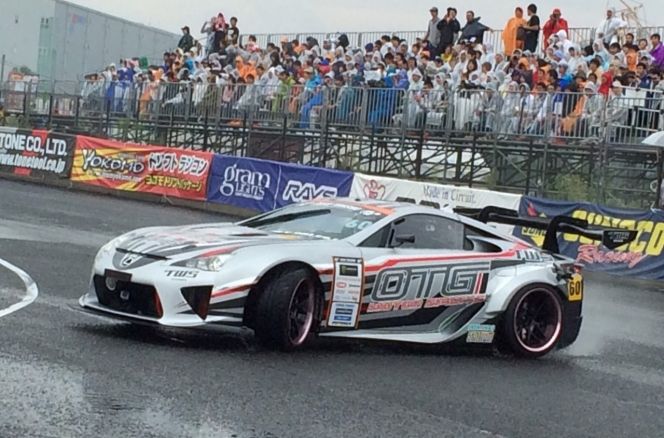Drift Racing Near Me: What You Need to Know About the Drifting
Drift racing is one of the most exciting forms of motorsport, blending precision driving with adrenaline-pumping action. Whether you’re a spectator looking for “drift racing near me” or a car enthusiast wanting to get involved, understanding the intricacies of drift racing is key. This article will dive deep into what a drift car is, how drift racing works, and how to get into the sport.
What is a Drift Car in Racing?
A drift car is specially modified to achieve and maintain a controlled oversteer, where the car slides sideways through turns. While virtually any rear-wheel-drive vehicle can drift, purpose-built drift cars undergo significant upgrades to enhance performance and control. Common modifications include:
Suspension Adjustments: Drift cars require stiff suspension setups to reduce body roll and enhance responsiveness during high-speed slides.
Limited-Slip Differential (LSD): An LSD allows both rear wheels to spin at the same speed, giving the car more control while drifting.
Engine Tuning: To maintain power throughout a drift, the car’s engine needs to provide consistent torque. This may involve turbocharging or engine swaps for more horsepower.
Tire Selection: Tires with lower grip on the rear wheels allow the car to initiate a drift more easily. However, tires on the front wheels need more grip for steering control.
Weight Distribution: Many drift cars have modified weight distribution, often moving weight to the rear of the car to help maintain balance during a drift.
Very famous drift vehicle can be the Nissan 240SX and Mazda RX-7. These vehicles are known for their lightweight bodies, rear-wheel drive, and ease of modification, making them ideal for drifting.

How Does Drift Racing Work?
Drift racing is not about who finishes first but who demonstrates the best control, style, and technique while sliding through a course. Unlike traditional racing, where speed is the primary focus, drifting competitions are judged on various factors, including line, angle, speed, and style.
The Line: The perfect way approaching a scope is called as “drift line.” It is generally the route that takes the car nearest to the apexes of corners while maintaining control and style. The better a driver follows this line, the higher their score.
Angle: The drift angle is meant by the path of line on the edge the vehicle have as long as a drift. Drivers who can maintain a large drift angle while keeping control of the car are awarded higher points.
Speed: Though drift racing isn’t about being the fastest around a track, maintaining speed during a drift is crucial. Drivers who slow down too much may lose points.
Style: Style is subjective but includes factors like how smooth the transitions between drifts are, how aggressively the driver attacks the course, and how close the car comes to clipping points or walls without making contact.
Scoring and Judging
Drift racing is scored by a panel of judges who assess each driver’s performance. In league as Formula Drift or D1 Grand Prix, the referee gives marks according to the driver’s line, angle, speed, and altogether style. The winning aims to score as much points on a group of tandem battles, which both drivers race head-to-head.

Racing on tandem battles, the front lining up car go forward with the pace and line, while the second car struggles to imitate the nearest as it can. The chase car is judged on how well it can match the lead car’s drift, while the lead car is judged on its ability to maintain control and style without compromising speed.
How to Get Into Drift Racing
If you’ve searched for “drift racing near me” and want to get involved, there are several steps to consider before hitting the track.
- Learn the Basics of Drifting
Before jumping into drift racing, it’s crucial to understand the fundamentals. Practice the following techniques:
Oversteer Control: Learn how to initiate and maintain oversteer by practicing on a skid pad or open space. Start by making sharp turns and accelerating into the turn to kick out the rear of the car.
Counter-Steering: If the vehicle starts to slide, one will have to change the steering wheel in the other direction of the drift (counter-steering) to maintain control.
Throttle Control: Balancing the throttle is key to maintaining a drift. A lot more throttle can make the vehicle to spin out, and if too little will finish the drift prematurely.
- Build or Buy a Drift Car
Once you’re familiar with the basics, you’ll need to either build or buy a drift car. As mentioned earlier, rear-wheel-drive cars are preferred for drifting due to their ability to initiate and maintain oversteer. Affordable options include the Nissan 350Z, BMW E36, or Mazda Miata.
Start with basic modifications like upgrading the suspension, adding an LSD, and installing high-performance tires. As you progress, consider more advanced modifications such as turbocharging the engine or upgrading the brakes for better control.
- Join a Local Drift Event
Many local racing venues host drift practice days, sometimes called “drift days” or “open track days.” These are excellent opportunities to practice your drifting skills in a safe and controlled environment. Look for “drift racing near me” to discover leagues surrounding you. Attending drift events also allows you to network with other drivers and gain valuable advice from more experienced drifters.
Drift racing is often organized in tiers, allowing beginners to participate alongside more experienced drivers. Don’t worry if you’re not perfect right away – drifting takes time to master, and these events are designed to help you improve.
- Enter Amateur Competitions
After gaining some experience, you can enter amateur drift competitions. Many regions have grassroots drift organizations that host events for novice and intermediate drivers. These competitions allow you to test your skills in a competitive environment without the pressure of professional-level competition.
Popular grassroots drifting organizations include Drift League, Drift Masters, and US Drift Circuit. Competitions are usually held on closed circuits or tracks designed for drifting, and they often feature solo and tandem runs.
- Attend Professional Drift Events
Watching professional drift events like Formula Drift can be a great way to learn from the pros. Pay attention to how professional drivers approach the track, handle their cars, and perform tandem runs. Formula Drift also offers a Pro-Am series, where amateur drivers can compete for a chance to earn a Formula Drift license and step into professional drifting.
Drift racing is an electrifying sport that blends power, control, and finesse. Whether you’re a fan searching for “drift racing near me” or aspiring to become a drift racer yourself, understanding what goes into the sport is the first step. From modifying your car to learning key drifting techniques and joining local events, getting into drift racing is a journey that requires dedication and practice. Once you’ve mastered the basics, you’ll find yourself hooked on the thrill of sliding sideways through corners and pushing your car to its limits.